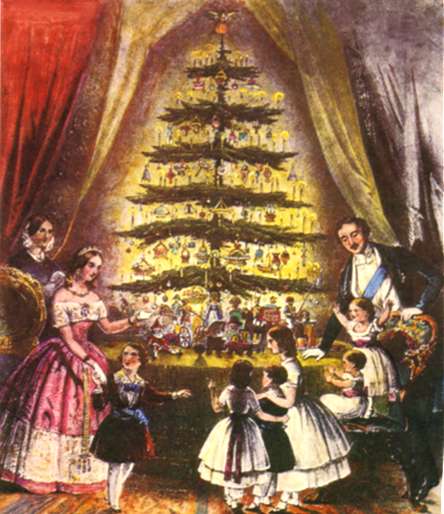Today families around the world gathered around a Christmas tree to open gifts. This tradition seems as old as the holiday itself, but in reality these practicesand many othersare relatively new inventions. And Charles Dickens can be credited with introducing or popularizing some of our favorite elements of the Christmas holiday
Christmas all but Forgotten
By the time Dickens came of age, celebrating Christmas had fallen by the wayside in most households. Thanks to the Industrial Revolution, countless families had immigrated to the city. By the latter part of the eighteenth century, the holiday was in decline. There were two primary reasons for the shift. First, the traditional Christmas celebration lasted twelve days, and most people simply couldn't afford to take that much time off work. Second, people were reluctant to celebrate the holiday according to their own traditions because appearing different or foreign could result in ostracism. At the same time, they were suspicious of new, unfamiliar traditions. A similar shift had happened in the United States, as well.
Dickens was not the only author to lament the loss of Christmas as a holiday. As he and his cohorts came of age, they often looked back wistfully on the joyful celebrations of their childhood. Sir Walter Scott (1808) and Washington Irving (1820) both expressed disappointment in the disappearance of Christmas. Then two works grabbed popular attention. In 1833, William Sandy published Selection of Christmas Carols Ancient and Modern. Four years later, Thomas K Hervey wrote The Book of Christmas. This was the start of a Christmas revival.

Hervey's Book of Christmas, illustrated by Robert Seymour
Dickens Brings Fresh Focus to the Holiday
Victorian England was primed for a new vision of a timeless holiday, and Dickens stepped in at the right moment. The beloved author built upon his own childhood memories and his socially conscious worldview, introducing a true paradigm shift about what Christmas actually meant.
Before the Victorian era, Christmas celebrations had been rather community focused. But Dickens, always concerned with the joys and challenges of childhood, changed Christmas into a much more child-centered holiday. Dickens explored the lives of children in so many of his works, and A Christmas Carol was no exception. Ebenezer Scrooge recalls scenes of loneliness from his own childhood, which are juxtaposed with images of Tiny Tim. The idea of paying special attention to children at Christmas came directly from Dickens' personal life; his daughter Mamie recalls that every year Dickens took the children to buy toys on Christmas day. As they got older, she said, that tradition came to an end.
We also find in Tiny Tim and his family the personification of poverty. Dickens firmly believed that Christmas was an opportune time to show care for the poor. Indeed, Dickens worked year round as a philanthropist and frequently advised his wealthy brethren to make charitable donations. Again, in A Christmas Carol, Scrooge is almost explicitly to blame for Tiny Tim's precarious condition, which also illustrates Dickens' belief that the wealthy must bear responsibility for those less fortunate. Dickens' neighbors didn't always agree, especially when the author hosted parties for members of the lower class in his own home. Over time, however, Christmas became a time for remembering the needs of others; take the Salvation Army, which solicits donations most actively during the holiday season. Coincidentally, the Salvation Army was a product of Victorian England.
The Emergence of New Christmas Traditions
Dickens certainly introduced a new understanding of the meaning of Christmas. His Christmas stories also gave rise to holiday traditions that now feel like they've always been part of our celebrations.
- Christmas trees: Prince Albert brought Christmas trees (a German tradition) to England, but Dickens popularized it. In the first Household Words Christmas story, Dickens uses the Christmas tree as the central symbol. In subsequent stories, the Christmas tree would figure prominently in protagonists' homes.
- Exchanging gifts: Again, Prince Albert imported this practice from Germany; the British traditionally exchanged gifts on New Year's Day. But in A Christmas Carol, the father giving his children gifts was presented as a significant aspect of the holiday. Again, Dickens reinforced this idea in his other Christmas tales.
- Christmas caroling: Sandy's Carols Ancient and Modern played on the Victorians' revived interest in exploring and updating music. Dickens played on this with the title of A Christmas Carol and caroling plays a role in the narrative itself.
- White Christmas: The romantic notion of a placid, snow-covered Christmas landscape is straight out of a Dickens story. Ironically, it rarely snows at Christmas in England, but this shows the power of Dickens' works in shaping our notions of the holiday. It just happened to snow on Christmas for eight consecutive years when Dickens was a child, and he often called on his childhood memories of the holiday.
The manuscript of A Christmas Carol is on display at the Morgan Museum. Watch how their conservation team preserved this fascinating and priceless artifact.










